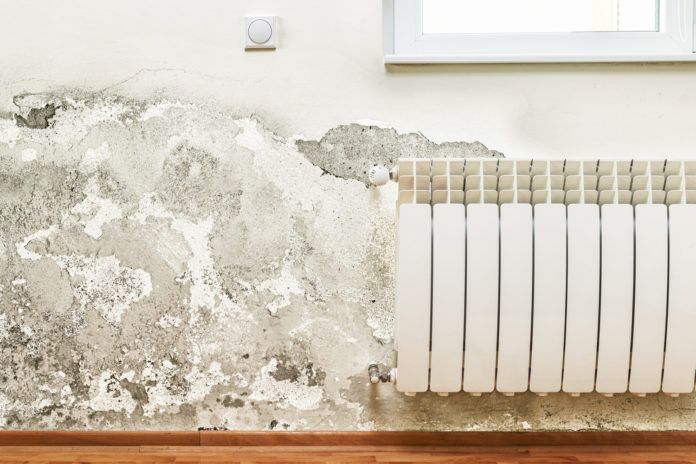
Many homes across Britain are at risk of developing damp and mould, Boiler Plan has stressed.
Damp most commonly happens when warm air hits cold walls, windows and other surfaces, creating a layer of condensation.
It can peel away paint and wallpaper, cause a musty smell, grow dangerous mould, and even damage the structure of a house.
The growth of mould can cause serious respiratory issues such as allergies and asthma and aggravate or cause skin conditions such as eczema.
Boiler Plan has five simple tips for installers to pass onto homeowners keen to ensure the prevention of damp:
- Keep the house warm: To avoid damp in the colder months, try and keep the home at a steady, consistent and warm temperature, so that surfaces don’t get cold enough to create condensation. It’s a good idea to set timers for your heating to turn on periodically throughout the day and to ensure your home is properly insulated.
- Contain and release moisture: When doing something that creates a lot of steam or moisture – such as bathing, showering or cooking – it’s best to close the doors of the room and open the window, so moisture doesn’t spread around the house, but escapes outside instead.
- Ventilation: When not creating steam or moisture, homeowners should ventilate the rooms in a house by leaving doors open so air can circulate. This prevents moisture building up.
- Don’t hang clothes to dry inside: If possible, always hang clothes outside to dry as even in winter, when it’s not raining. Clothes dry quickly outdoors. If it’s not possible, it’s a good idea to invest in a tumble dryer – these contain the steam and moisture created when drying clothes, rather than drying them through evaporation into the room.
- Use moisture-resistant paint: If one area of the home is particularly prone to damp and the issue tends to return, anti-mould or moisture-resistant paint is fantastic at protecting your walls from damp damage – it’s also available in a range of colours and finishes, and isn’t much more expensive than traditional paint.
Ian Henderson, managing director at Boiler Plan, said: “Once damp starts, it can sometimes be difficult to remedy the issues it causes, such as mould growth and structural damage.
“It’s much easier to follow these steps instead and prevent damp from beginning to form – it’s really important to make sure you don’t allow condensation to build up and temperatures to drop in the winter.
“Prevention is always easier than the cure – which is pretty literal when it comes to mould, considering the health risks that can come along with it.”
